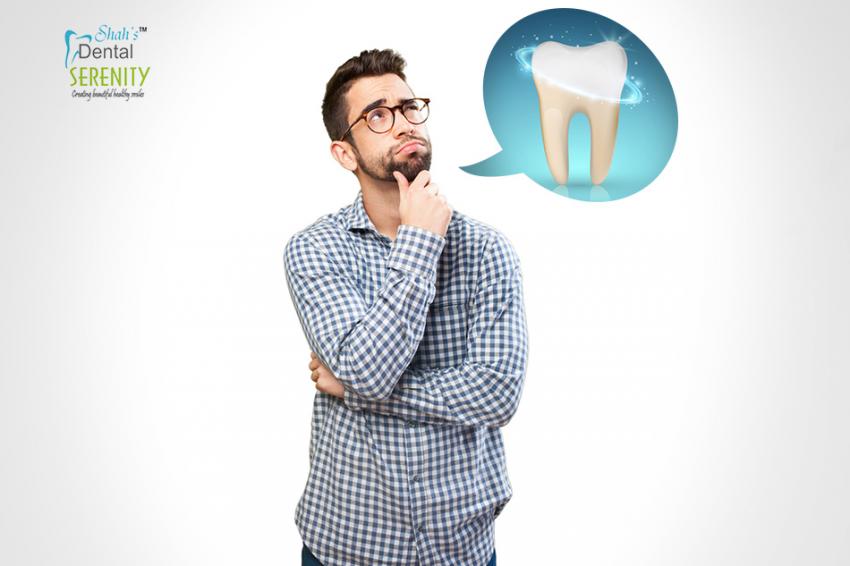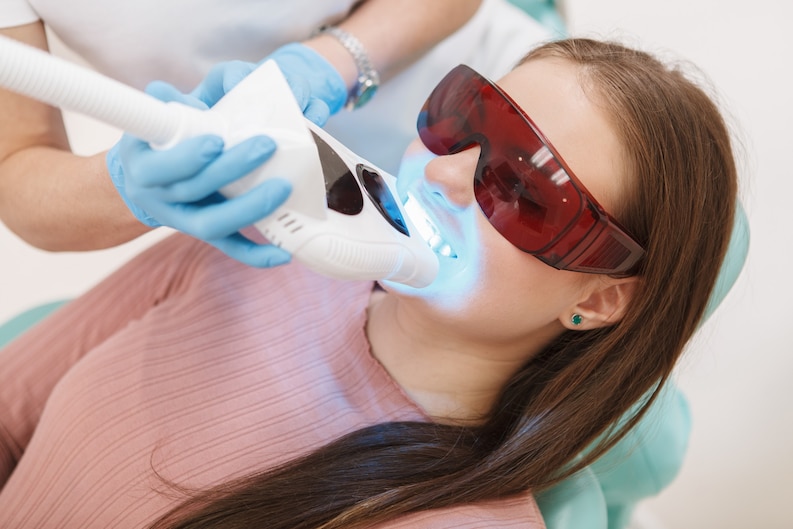Teeth whitening is a common procedure used to lighten the color of teeth and remove stains. It can be done at a dentist’s office or at home using various products. The key to teeth whitening is the use of peroxide-based bleaching agents, which come in different concentrations.
Whitening vs. Bleaching
The terms “whitening” and “bleaching” are often used interchangeably, but they have different meanings. Whitening can be done with both bleaching and non-bleaching products. Bleaching is the type of whitening that involves using bleach containing peroxide. It can clean both deep and surface stains and make teeth even whiter than their natural shade.
Types of Tooth Discoloration
There are two basic types of tooth discoloration: intrinsic and extrinsic. Intrinsic discoloration occurs inside the tooth and can be caused by aging, tooth injuries, certain health conditions, and medications. Extrinsic discoloration happens on the tooth’s surface when substances like foods, beverages, or tobacco stain the teeth. Poor oral hygiene can also contribute to extrinsic discoloration.
In-Office vs. At-Home Whitening Options
Teeth whitening done at a dentist’s office typically provides faster and more dramatic results. Dentists use stronger bleaching solutions and may incorporate heat or light to expedite the process. In-office treatments can make teeth three to eight shades brighter and usually require multiple visits.
At-home whitening options include tooth whitening strips and gels, tray-based systems, whitening toothpaste, rinses, and chewing gums. These products are generally less expensive but may take longer to achieve noticeable results. It’s essential to follow the instructions carefully to avoid overuse or misuse.
Factors to Consider Before Teeth Whitening
Before deciding on a teeth whitening method, several factors should be considered, including dental health, natural tooth color, previous dental treatments, potential risks, and desired results.
Impact of Dental Health on Whitening
It’s crucial to have good oral health before undergoing teeth whitening. Any underlying issues like gum disease or cavities should be addressed before initiating the whitening process. Whitening treatments may not be successful on dental restorations such as bonding, crowns, or implants.
Determining the Most Effective Method
The best teeth whitening method varies based on individual circumstances, needs, and budget. Professional in-office treatments are highly effective and long-lasting but more expensive. At-home products offer convenience and more affordable options but may require more extended use for similar results.
Potential Risks and Side Effects
Teeth whitening can lead to temporary tooth sensitivity, gum irritation, and changes in the tooth enamel’s surface. Some studies suggest potential risks such as erosion, mineral loss, and damage to the teeth’s pulp. Following the dentist’s recommendations and using ADA-approved products can help minimize these risks. Any undesirable changes or side effects should be promptly reported to a dentist.
Maintaining Teeth Whitening Results
To maintain the results of teeth whitening treatments, it’s important to practice good oral hygiene and make certain lifestyle choices.
Oral Hygiene Practices for Upkeep
Regular brushing and flossing, along with the use of fluoride toothpaste, are key to maintaining a bright smile. It’s recommended to brush teeth at least twice a day and floss daily. Drinking fluoridated water can also contribute to oral health.
Foods and Beverages to Avoid
Certain foods and beverages can stain teeth and diminish the whitening effect. Avoid acidic foods, tannin-rich substances like black tea and coffee, white and red wine, sports drinks, carbonated beverages, intensely colored foods like blueberries, and sauces. Limiting or eliminating these items from your diet can help keep teeth whiter.
Considerations for Sensitive Teeth and Individual Tooth Color
Individuals with sensitive teeth should discuss options with their dentist to minimize discomfort during and after whitening treatments. It’s important to understand that teeth whitening can only lighten teeth up to a certain point. If a person’s natural tooth color is gray or purple, whitening may not be effective.
Addressing Teeth Whitening Risks and Limitations
As with any medical procedure, teeth whitening comes with risks and limitations that should be taken into account.
Risks Associated with Aggressive Whitening
Overly aggressive teeth whitening can lead to gum irritation, increased tooth sensitivity, softening of the tooth enamel, roughening of the teeth’s surface, and damage to dental restorations like crowns. This emphasizes the importance of following the dentist’s recommendations and not exceeding recommended usage.
ADA Recommendations for Safe Use
The American Dental Association (ADA) provides guidelines for teeth whitening product approval. It’s advisable to choose products with the ADA seal of approval to ensure safety and efficacy. Consulting with a dentist before starting any whitening treatment is also recommended to assess individual suitability.
Managing Changes in Tooth Color and Sensitivity
Teeth whitening is not a permanent solution, and the results can fade over time. It’s important to monitor tooth color changes and sensitivity. Touch-up treatments as recommended by the dentist can help maintain the desired shade. Consulting with a dentist can provide guidance on managing any changes or discomfort.
FAQs
What is teeth whitening?
Teeth whitening is a procedure to lighten the color of the teeth and remove stains. It can be done using peroxide-based bleaching agents in an office setting or with at-home products.
Are there any side effects of teeth whitening?
Teeth whitening can lead to temporary tooth sensitivity, gum irritation, and changes in the tooth enamel’s surface. It’s important to follow instructions and promptly report any adverse effects to a dentist.
How long does teeth whitening last?
The longevity of teeth whitening results varies based on individual factors such as oral hygiene practices, dietary choices, and lifestyle habits. Touch-up treatments may be required to maintain the desired shade.
Who is a suitable candidate for teeth whitening treatments?
Teeth whitening is most effective for individuals with healthy, unrestored teeth and gums, particularly those with yellow tones. It may not be recommended for individuals with sensitive teeth, dental restorations, very dark stains, or a significant number of fillings or crowns.
In conclusion, teeth whitening can be an effective way to achieve a brighter smile. It’s important to understand the different procedures and products available, consider individual factors, follow instructions carefully, and consult with a dentist for proper guidance. With the right approach, teeth whitening can be safe and provide long-lasting results.






